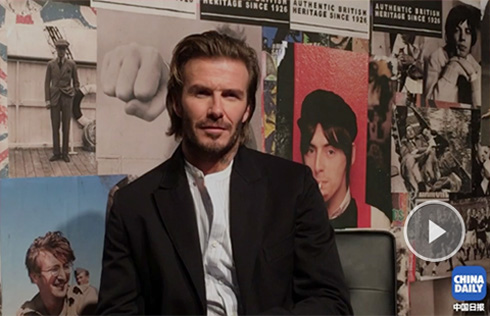The masks of Qinghai
Dyes are applied under strict specifications. In the early stage, stone colors were used. Confined by economic conditions, the regions with poorer economy would apply modern ads colors, while the well-off regions would adopt pure gold powder and mineral pigments imported from Germany and the United States. The masks are painted while the pigments are abraded. The most favored colors are pure red, pure yellow, pure blue, pure green, pure black and white. Half tints are seldom used. The colors must look simple, keen and gorgeous. The patterns must be decorative, showing sharply contrasted colors. The lacquer-smeared surface will look shiny, foiling imposing, stately and mysterious manners.
Facial makeup is a genre of the Tibetan Buddhism painting art. The colors are of religious symbolic implications. They are painted with specific colors according to their roles in the tenets. This is a tradition criterion to be followed. Buddhism sutras say the eyes are keen to four colors, which are green, yellow, red and white, the cardinal colors in Tibetan paintings. Tibetan masks follow same principles to use colors with Tibetan paintings.
Red is a main color to express the three virtues of authority, tranquility and indignation in Buddhism. When it is applied to women, red denotes love, passion and joy. Monk cassocks, monk cassock decorations, sea of flames supporting divinities, Nirmanakaya countenance, and Dakini body are largely shown with the red color, to deliver stateliness, awe and fervor.
Yellow symbolizes mercy, widsom, prosperity, and merits and virtues. Buddhism paintings are generally drawn with the yellow color, particularly the faces and exposed limbs of deities and Buddhas, their crowns, and background color of palace roofs. In order to pop out the tenet connotations of yellow and strengthen color effects, pure gold is also applied as dye. The technique has been perfect to apply gilt to a surface.
Blue represents power, bravery and awe. It is used in protector deity statues and Buddha figure backgrounds. The architecture door frames are also decorated with blue.
Green implies infinite mercy, and expresses sweet dew, cool breeze, saving other living creatures, great deeds, and good conducts. Green is indispensable to paint Buddha and Bodhisattva background, Green Tara, and foil the main objects.
Black is largely used to express evils and darkness. It is sometimes applied to incarnate extraordinary protective guardians pledging allegiance to the power of Buddha. White is adopted to reflect good karma. It is to reveal innocence, holiness, mercy, and geniality. The Longevity Statue, Four-armed Bodhisattva Guanyin, and five Longevity Fairies are decorated largely in white, with artistic effects.
However, Tibetan masks in the conspicuous Taer Temple seek flowery colors. They are different in the habits of using colors from the symbolic meanings of colors in Tibetan drawings. Here, red symbolizes power and sublimity. Yellow symbolizes solemness and faith. Blue symbolizes might and justice. And black symbolizes fierce and evil.
Connotations and religious spirits of Tibetan masks
Tibetan masks materialize the witchery consciousness and life consciousness. They accommodate to people’s mentality to make pious praying. In this course, there comes a visional sense of reverence, making the worshippers content to some extents in mind. Qiang Mu and the Tibetan drama art normally take masks as a media in religious ceremonies. They turn idol deities and Buddhas into lifelike ones, and abstract stories in sutras into vivid artistic images, so as to promote the sutras and ideas of Tibetan Buddhism. They are entertainment modes applying artistic images to reflect religious spirits. These largely identical religious ceremonies adopt the spell dances and Tibetan drama forms to spread religious thoughts, intensify Tibetan Buddhism mentality, and subsequently sow the seeds of religious cultures into the hearts of everyone.
As for Tibetan people, the masks are applied in the first place to show respect to deities and Buddhas that the masks represent in festivals and sacrificial offering ceremonies. They also communicate men and the supernatural. With their aesthetic modes suiting both refined and popular tastes, the masks would move the people, inspire emotions, and subsequently play a publicity role supplementing eminent monks preaching in altars. As a result, Tibetan masks are permeated with all sorts of Buddhism stories and spectacular deities and ghosts. Tibetan Buddhism culture also forges narrative modes and aesthetic feelings devoted to masks.
Folk dance masks
As shown in existing data, folk dance masks are fewer in Qinghai. They are largely separated into the following three types:
The first type is masks in Tibetan and Tu nationality folk dances, showing primitive simplicity. The most representative are tile-shaped masks in Tongren prefecture and Nadun masks in Minhe prefecture.
The Qinghai Hehuang valley lies in the Yellow River drainage basin, an area of long-standing agriculture and animal husbandry, featuring farming-based cultures. The farming belief of the distant past was another source of the folk dance masks. The “farmer and farm cattle” masks in the one actor Nadun show of Sanchuan Tu Nationality symbolize the traditional Chinese farming culture. The drama plot unveiled the cultural concept of “respecting farmers and putting agriculture first”. The tile-shaped masks are applied in the Tibetan Leshize dance, in which the player holds a tiny wooden axe (divine axe), said to be used to fight against droughts, pray for rains and mercy of dragon kings
 |






















